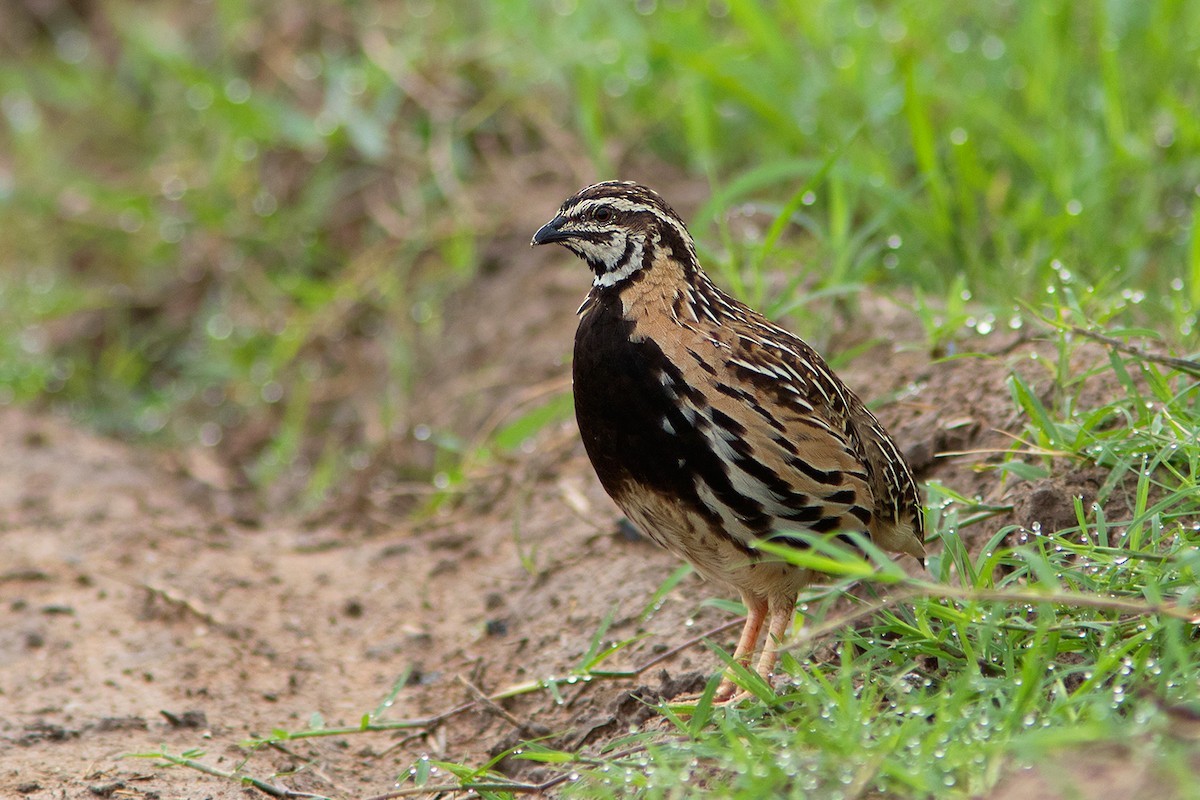Rain Quail
A species of Typical Old World Quails Scientific name : Coturnix coromandelica Genus : Typical Old World Quails
Rain Quail, A species of Typical Old World Quails
Botanical name: Coturnix coromandelica
Genus: Typical Old World Quails
Content
Description General Info
 Photo By Ayuwat Jearwattanakanok
Photo By Ayuwat Jearwattanakanok Description
The rain quail lacks barring on primaries. The male has a black breast-patch and distinctive head pattern of black and white. The female is difficult to separate from female common quail and Japanese quail, although the spots on the breast are more delicate. It is 6–6.5 in (15–17 cm) and weighs roughly 2.25–2.5 oz (64–71 g). The call is a metallic pair of quit- quit nots, constantly repeated mornings and evenings, and in the breeding season also during the night. It is quite unmistakably distinct from the call of the common grey quail. 
Size
18 cm
Nest Placement
Ground
Feeding Habits
Rain Quail's diet consists of grass and weed seeds as well as insects. They forage in small flocks, exhibiting unique dietary preferences and behaviors notable in their group feeding dynamics.
Habitat
The rain Quail typically inhabits open environments such as grasslands, cultivated areas, including plantations and fallow rice fields, as well as dry scrublands, meadows, and gardens. They are also found in scrub jungle regions. These birds generally prefer areas that provide a combination of cover and open space.
Dite type
Granivorous
General Info
Feeding Habits
Bird food type
Behavior
The rain quail feeds on seeds of grasses and other plants, insect larvae and small invertebrates. Breeding takes place between March and October, but chiefly after the start of the southwesterly monsoon season in June. The eggs are laid in a scrape in the ground, sometimes in the open under a Euphorbia or similar bush. There are usually six to eight eggs in the clutch. The incubation period is sixteen to eighteen days. The chicks are able to leave the nest soon after they have hatched and remain with their parents for about eight months. 
Distribution Area
Grassland, cropped fields, and scrub in the Indus valley of central Bangladesh, India, Nepal and Pakistan, ranging across the Gangetic plains, and parts of peninsular continental India. Mostly seen in winter further south. 
Species Status
The rain quail has a very large range and the population is stable. It is a common species and the International Union for Conservation of Nature has rated their conservation status as "least concern". 

 Photo By Ayuwat Jearwattanakanok
Photo By Ayuwat Jearwattanakanok